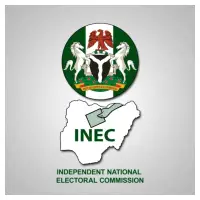President Donald Trump announced on Wednesday that a new trade agreement between the United States and China has been finalized, pending only final approval through a personal agreement between him and Chinese President Xi Jinping.
The announcement came via Trump's official account on the social media platform X, where he outlined key components of the deal and described the current U.S.-China relationship as "excellent."
"Our deal with China is done, subject to final approval with President Xi and me," Trump posted. "Full magnets, and any necessary rare earths, will be supplied, up front, by China."
Key Elements of the Trade Agreement
The agreement includes a critical provision where China will supply the United States with full shipments of magnets and other essential rare earth materials. These resources are vital to industries such as electronics, defense, and renewable energy—sectors where China has long dominated the global supply chain.
In exchange, the U.S. is expected to maintain access for Chinese students to American colleges and universities. Trump welcomed this aspect of the deal, writing: "Including Chinese students using our colleges and universities (which has always been good with me!)."
This marks a shift from earlier Trump-era policies that sought to restrict student visas for Chinese nationals over concerns about intellectual property theft and national security. Despite past tensions, Chinese students have remained a significant presence in U.S. higher education, with nearly 280,000 enrolled during the 2023-2024 academic year.
Tariff Structure and Economic Impact
The president also outlined the tariff structure under the new trade deal, declaring it a win for American manufacturing. According to Trump, the United States will retain tariffs totaling 55%, while China will hold steady at 10%.
"We are getting a total of 55 per cent tariffs, China is getting 10 percent. Relationship is excellent!" Trump stated.
This significant tariff gap is likely to be viewed by domestic manufacturers as a protective measure, though analysts suggest it could reignite criticism from global trade bodies and economic allies.
The final implementation of the agreement now hinges on a one-on-one consensus between Trump and Xi. No official statement has yet been released by Beijing.
The announcement comes amid growing global scrutiny of China's trade practices and supply chain dominance, particularly in critical sectors. It also signals a potential thaw in economic tensions between the world's two largest economies.
Follow BenriNews on our social media platforms for more updates:











